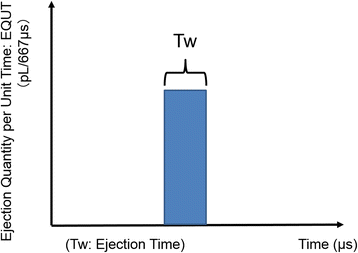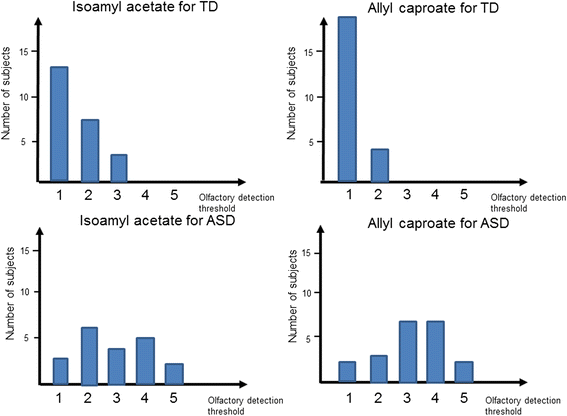Assessment of olfactory detection thresholds in children with autism spectrum disorders using a pulse ejection system
- PMID: 26788283
- PMCID: PMC4717641
- DOI: 10.1186/s13229-016-0071-2
Assessment of olfactory detection thresholds in children with autism spectrum disorders using a pulse ejection system
Abstract
Background: Atypical responsiveness to olfactory stimuli has been reported as the strongest predictor of social impairment in children with autism spectrum disorders (ASD). However, previous laboratory-based sensory psychophysical studies that have aimed to investigate olfactory sensitivity in children with ASD have produced inconsistent results. The methodology of these studies is limited by several factors, and more sophisticated approaches are required to produce consistent results.
Methods: We measured olfactory detection thresholds in children with ASD and typical development (TD) using a pulse ejection system-a newly developed methodology designed to resolve problems encountered in previous studies. The two odorants used as stimuli were isoamyl acetate and allyl caproate.
Results: Forty-three participants took part in this study: 23 (6 females, 17 males) children with ASD and 20 with TD (6 females, 14 males). Olfactory detection thresholds of children with ASD were significantly higher than those of TD children with both isoamyl acetate (2.85 ± 0.28 vs 1.57 ± 0.15; p < 0.001) and allyl caproate ( 3.30 ± 0.23 vs 1.17 ± 0.08; p < 0.001).
Conclusions: We found impaired olfactory detection thresholds in children with ASD. Our results contribute to a better understanding of the olfactory abnormalities that children with ASD experience. Considering the role and effect that odors play in our daily lives, insensitivity to some odorants might have a tremendous impact on children with ASD. Future studies of olfactory processing in ASD may reveal important links between brain function, clinically relevant behavior, and treatment.
Keywords: Autism spectrum disorder; Laboratory-based studies; Olfaction; Olfactory detection threshold; Pulse ejection system.
Figures




References
-
- American Psychiatric Association . Diagnostic and Statistical Manual of Mental Disorders. 5. Arlington: American Psychiatric Publishing; 2013. pp. 5–25.
Publication types
MeSH terms
Substances
LinkOut - more resources
Full Text Sources
Other Literature Sources
Medical

